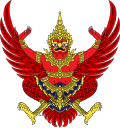| | |||||||||||||||||||||||||||||||||||||||||||||||||||||||
| |||||||||||||||||||||||||||||||||||||||||||||||||||||||
160 of the 281 seats in the House of Representatives | |||||||||||||||||||||||||||||||||||||||||||||||||||||||
| Turnout | 44.07% ( | ||||||||||||||||||||||||||||||||||||||||||||||||||||||
|---|---|---|---|---|---|---|---|---|---|---|---|---|---|---|---|---|---|---|---|---|---|---|---|---|---|---|---|---|---|---|---|---|---|---|---|---|---|---|---|---|---|---|---|---|---|---|---|---|---|---|---|---|---|---|---|
This lists parties that won seats. See the complete results below.
| |||||||||||||||||||||||||||||||||||||||||||||||||||||||
 |
|---|
| |
General elections were held in Thailand on 12 December 1957. They were the first elections after the coup led by Sarit Thanarat.
The new Sahaphum Party emerged as the largest party in parliament with 40 of the 160 elected seats, although with 59 MPs, independents were the largest bloc in Parliament. Voter turnout was 44%. [2]
